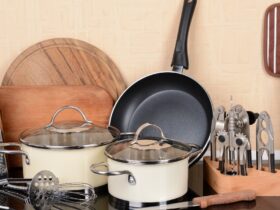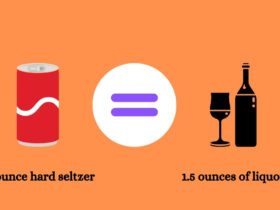When it comes to food safety, few things are more important than how ready-to-eat (RTE) foods are handled. These are foods that won’t be cooked or reheated before serving—think salads, sandwiches, fresh fruits, deli meats, and bakery items. Because there’s no final step to kill germs, what food workers use—and how they behave—makes all the difference between a safe meal and a potential health hazard.
So what should food workers use to protect ready-to-eat food from contamination? The simple answer is: proper utensils, gloves, clean hands, and strict hygiene practices. But there’s more to it than that. Let’s break down the key tools and practices that every food worker must follow to keep RTE food safe for customers.
Understanding the Risk: Why Ready-to-Eat Foods Need Special Care
Unlike raw ingredients that may go through heat treatment, RTE foods are consumed as they are. That makes them especially vulnerable to contamination from:
- Unwashed hands
- Dirty surfaces or utensils
- Cross-contamination from raw food
- Airborne bacteria
- Improper storage
According to the CDC, foodborne illnesses cause about 48 million illnesses annually in the U.S. alone, and mishandling RTE foods is a major contributor. That’s why food workers must treat these foods with extra care and strict cleanliness.
1. Use of Gloves: Barrier Between Hands and Food
Gloves are one of the most common tools used to prevent direct hand contact with RTE food. But not all glove use is good glove use.
Key guidelines for glove safety:
- Always wash hands before putting on gloves
- Change gloves between tasks (e.g., switching from raw meat to salad prep)
- Never reuse disposable gloves
- Don’t touch dirty surfaces or money with gloves used for food handling
Many workers make the mistake of thinking gloves make them invincible. In reality, dirty gloves can spread just as many germs as dirty hands if not changed regularly.
The FDA Food Code requires food employees to avoid bare-hand contact with RTE food unless they are operating under special, approved procedures. Using gloves is the easiest way to comply.
2. Utensils: Tongs, Scoops, Spoons, and More
When gloves aren’t practical—say at a self-serve salad bar or bakery counter—utensils are the go-to solution.
Commonly used utensils include:
- Tongs for picking up bread, deli slices, or salad ingredients
- Scoops for handling items like nuts, candies, or ice
- Spatulas for baked goods or cooked RTE items like pancakes
- Spoons or ladles for ready soups, sauces, or cold pasta
Best practices:
- Keep utensils stored in a clean container
- Change or clean them at least every four hours
- Use color-coded tools to avoid cross-contamination
- Always store handles above the rim to avoid food contact
Even better, some businesses now offer touch-free dispensers or utensil holders that limit hand contact entirely.
3. Clean, Bare Hands: Only When Permitted
There are rare instances when bare-hand contact is allowed (like when wearing gloves would interfere with food preparation), but these require approval and strict procedures including:
- Comprehensive handwashing policies
- No open wounds or cuts
- Regular handwashing with soap and warm water for at least 20 seconds
- Fingernails trimmed and clean
- No nail polish or artificial nails (they can harbor bacteria)
The CDC emphasizes that handwashing is one of the most effective ways to reduce the spread of pathogens.
4. Food Shields and Barriers: Protecting Food from the Environment
In buffets or open food displays, sneeze guards (also called food shields) play a critical role. These transparent barriers block airborne contaminants like sneezes, coughs, or even dust from landing on RTE food.
Tips for effective barrier use:
- Shields should be positioned between the customer’s face and the food
- Clean them regularly—daily at minimum
- Adjust height for adequate protection but easy access
- Ensure all serving utensils are placed underneath the shield
Even though they might go unnoticed by customers, sneeze guards are a silent defense system in any food service setup.
5. Proper Food Storage and Labeling
Even when no one is touching the food, contamination can happen during storage. That’s why safe storage procedures are critical.
Safe storage checklist:
- Keep RTE foods away from raw meats, seafood, or eggs
- Store all foods at safe temperatures (below 40°F for cold foods, above 140°F for hot foods)
- Label all RTE items with preparation and use-by dates
- Use sealed containers or wrap foods tightly with food-grade plastic wrap
Storing prepared items in designated clean areas of the refrigerator or pantry is one of the most overlooked but crucial food safety practices.
6. Training and Awareness: Empowering Food Workers
None of these tools matter if workers aren’t trained properly. All food workers should undergo food safety training based on FDA Food Code standards or their local health department’s guidelines.
Training should include:
- When and how to wash hands
- When to use gloves or utensils
- Identifying potential hazards (like expired food or signs of spoilage)
- Cleaning and sanitizing work surfaces
Many states in the U.S. require food handlers to pass a certification test. In California, for example, the California Food Handler Card is mandatory for most food service employees.
Personal Note: A Lesson From the Kitchen
Years ago, while working a part-time job in a local café, I saw firsthand how easily things can go wrong. A coworker used the same knife to slice ham and then cut lettuce—without even wiping it. That small mistake caused a customer to get sick, and we received a health violation. Since then, I’ve never underestimated the importance of tools, training, and habits. It’s often the smallest things that make the biggest impact in food safety.
Conclusion
To protect ready-to-eat foods from contamination, food workers must use a mix of gloves, clean utensils, food shields, and proper storage practices. Above all, education and vigilance are what keep customers safe. Whether you’re prepping a deli sandwich or setting up a salad bar, the way you handle RTE food is a direct reflection of how much you value public health.
If you found this article informative, feel free to check out our other articles as well. We cover practical food safety tips, kitchen hygiene best practices, and more topics that matter to both home cooks and food professionals.







Leave a Reply